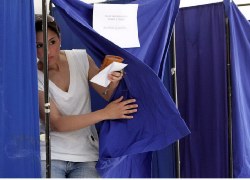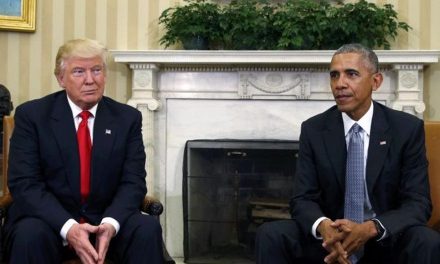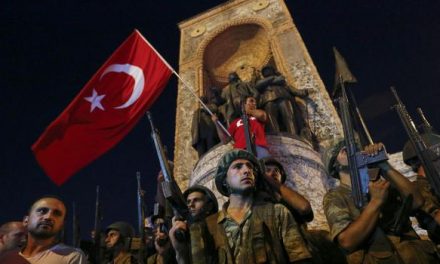by Jacob Laksin, FrontPageMagazine
The recent success of Jordanian suicide bomber and al-Qaeda double agent Humam Khalil Abu-Mulal al-Balawi in carrying out a deadly attack on CIA officials in Afghanistan's Khost military base also marked a tragic failure of U.S. intelligence. Had intelligence operatives discovered al-Balawi's jihadist identity sooner and acted on the knowledge to prevent his meeting face to face with CIA officers, seven of the agency's employees might still be alive.
Yet the dismal state of U.S. intelligence gathering in the war on terror goes beyond the CIA's failures. The armed forces, no less than their clandestine service counterparts, rely on detailed and precise intelligence as part of their daily struggle to defeat the Taliban insurgency and bring stability to Afghanistan's lawless outlands. But much of that intelligence is of such inferior quality, at least for the purposes of a counterinsurgency campaign, that some commanding officers have taken to reading U.S. newspapers instead of intelligence reports in order to get a grasp of the ground-level realities that confront the troops.
That's the stunning revelation of a new report on the state of U.S. intelligence in Afghanistan. Authored by top intelligence officers in Afghanistan and published this month by the Center for a New American Security, the report, "Fixing Intel: A Blueprint for Making Intelligence Relevant in Afghanistan," offers a pointed critique of the intelligence collection process on the war's frontlines. In the blunt assessment of General Stanley McChrystal, the U.S. commander in Afghanistan, military leaders "are not getting the right information to make decisions with."
One factor undermining U.S. intelligence, according to the authors, is its misplaced focus. Presently, the intelligence community in Afghanistan spends its time analyzing the various networks of terrorist insurgents and monitoring their actions. That information is then passed along to combat units, who can spot Taliban fighters planting bombs and IED's for an ambush and kill or capture identified targets. This approach may sound sensible in theory, but it comes with a serious drawback: it is innately reactive. In practice, that means that U.S. troops must wait for the terrorist threat to surface before they can neutralize it. But what if there were a way to diminish the Taliban's capacity to inflict terror before they strike?
There is, the CNAS report contends. Instead of limiting their interest to Taliban insurgents, intelligence analysts should be looking at the broader Afghan population. In this scenario, analysts would turn their attention to the daily dynamics of life in Afghan districts. Everything from the power relations among village elders to the pace and progress of development projects would become the new focus. Such "population-centric information," much of it already available but underused, may not sound as critical as identifying the insurgents and IED sites. Strategically, however, it may be even more useful to the U.S.-led mission. For only by securing the support and cooperation of the Afghan people can coalition forces hope to defeat the Taliban insurgency.
The case of Nawa is instructive. As the report explains:
"In late June 2009, a small number of U.S. Marines and British soldiers were the only foreign forces in Nawa, a district of 70,000 farmers in Afghanistan's Helmand province. The American and British troops could not venture a kilometer from their cramped base without confronting machine gun and rocket fire from insurgents. Local farmers, wary of reprisals by the Taliban, refused to make eye contact with foreign soldiers, much less speak with them or offer valuable battlefield and demographic information.
The tide began to turn in Nawa on July 2, when 800 Marines descended in helicopters and began sweeping across the district on foot, establishing nearly two dozen patrol bases in villages and cornfields along the way. Five months later and with few shots fired by Marines after their initial operation, the situation in Nawa is radically different. Insurgents find it substantially more difficult to operate without being ostracized or reported by farmers; government officials meet regularly with citizens to address their grievances, removing this powerful instrument of local control from the Taliban's arsenal; the district center has transformed from a ghost town into a bustling bazaar; and IED incidents are down 90 percent."
How did the Marines do it? Primarily, by realizing that understanding Nawa's residents was the key to driving out the Taliban. Relying on wide variety of intelligence sources – from the accounts of military patrols, to the notes of officers who met with local officials, to the observations of civil affairs officers – intelligence analysts tried to find a chink in the Taliban's armor.
They found one. While the Taliban empowered young fighters and mullahs, they also made an enemy of local elders, who resented having their traditional power structure challenged by the Taliban's parvenus. The Marines, aided by a charismatic district governor, stepped in to support the tribal elders, widening the wedge between Nawa's people and the Taliban. Deprived of local support, the Taliban found it more difficult to operate – hence the 90 percent drop in IED attacks. (The CNAS report notes that intelligence collectors who focused exclusively on countering the threat from IED's also saw declines in the number of attacks, but nothing on the dramatic scale of what occurred in Nawa.)
It's not always that simple, of course. The Marines in Nawa had certain unique advantages. One was an effective district governor, who helped rally the local population. Another was substantial troop and police strength. With one Marine, Afghan soldier or policeman for every 50 citizens, locals could be assured of protection against Taliban reprisals. That made their decision to side with the Marines against the Taliban that much easier. Even taking these advantages into account, however, the report makes a convincing case that the security turnaround in Nawa could not have happened without the right intelligence gathering techniques.
Unfortunately, Nawa remains the exception rather than the rule. It's a grim reflection on the state of U.S. intelligence collection that the military became aware of the Nawa success not through intelligence channels but through media reports.
Still, the CNAS report suggests that a fundamental rethinking of U.S. intelligence strategy in Afghanistan is underway. More and more, military leaders are beginning to understand that killing Taliban fighters, though important, must take a back seat to the less storied but more essential work of winning the hearts and minds of Afghan population and turning them against the Taliban. It may sound counterintuitive, but the evidence seems to bear out General McChrystal's dictum: "The conflict will be won by persuading the population, not by destroying the enemy."



















